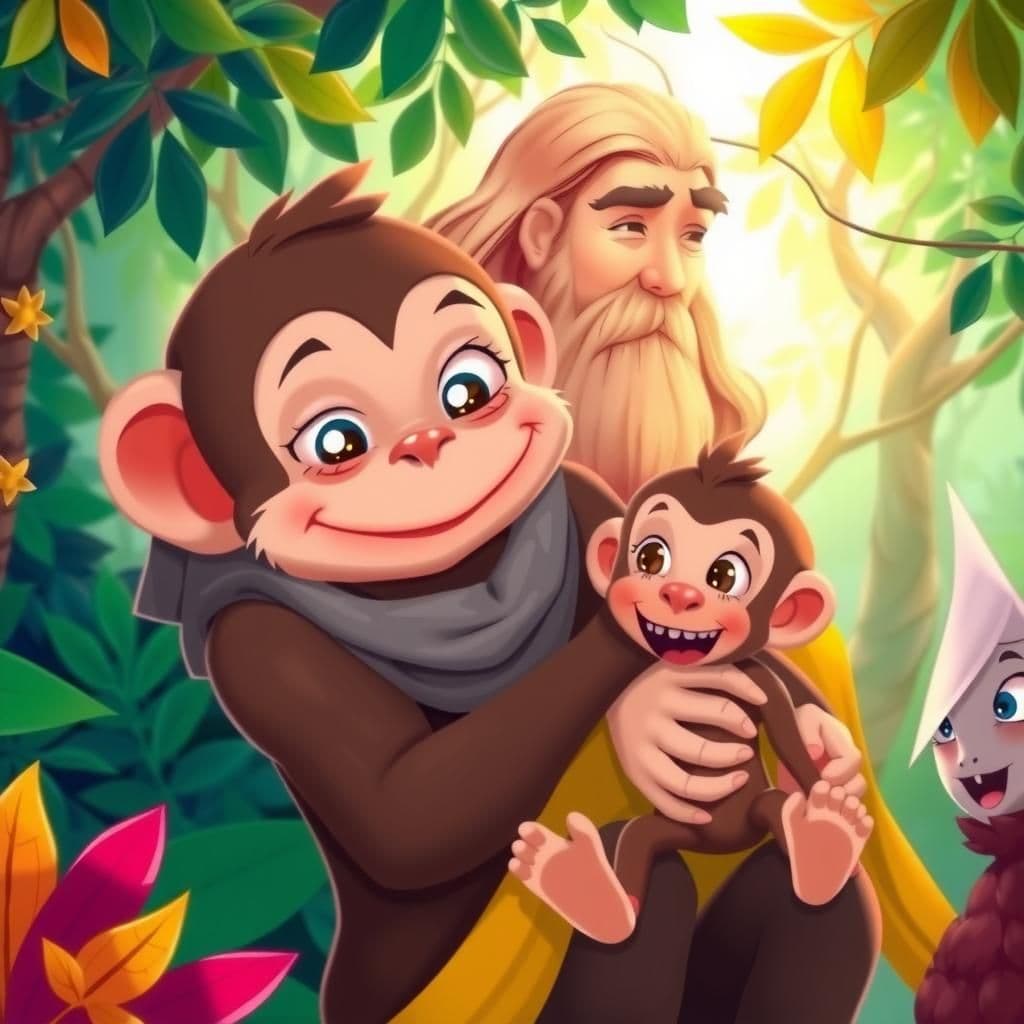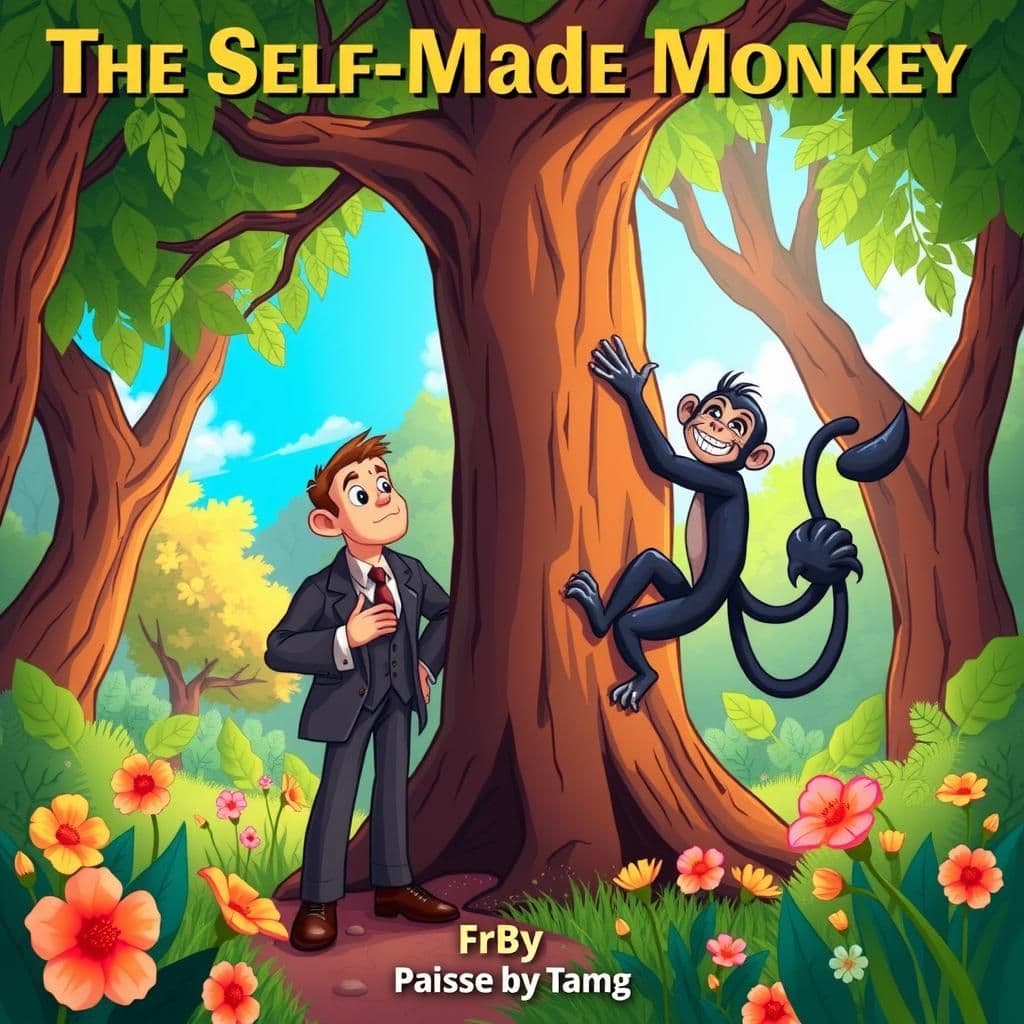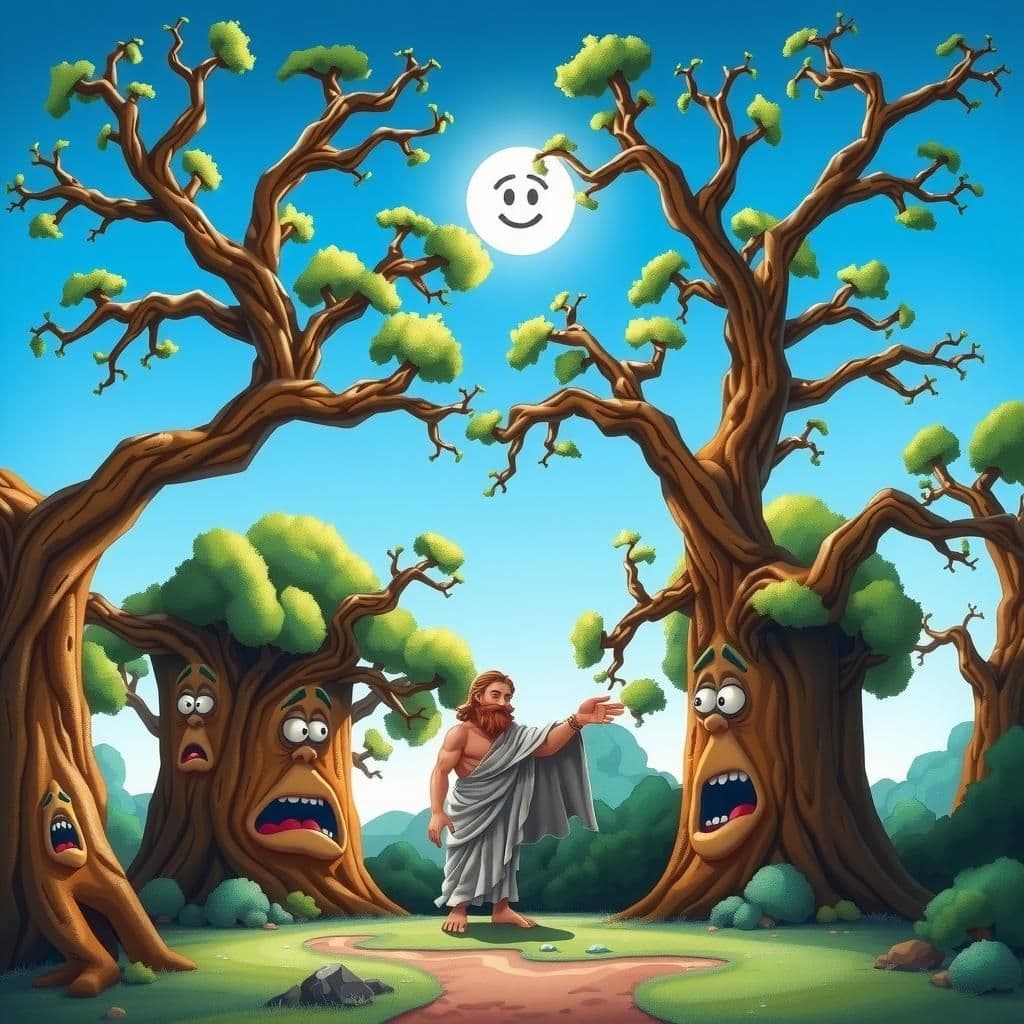Jupiter and the Monkey

Story Summary
In "Jupiter and the Monkey," a culturally significant moral story, Jupiter promises a reward for the handsomest offspring in the forest. The Monkey proudly presents her ill-featured son, asserting that he is the most beautiful in her eyes, despite the laughter of others. This short and sweet moral story teaches kids that a mother's love transcends appearances, highlighting simple lessons from stories about self-acceptance and inner beauty.
Click to reveal the moral of the story
The love of a parent for their child transcends external appearances and societal opinions.
Historical Context
This fable is reminiscent of Aesop's collection of moral tales, which originated in ancient Greece around the 6th century BCE. Aesop's fables often feature anthropomorphized animals and convey moral lessons through their narratives, reflecting cultural values about family, perception, and self-acceptance. The story highlights the theme of maternal love and subjective beauty, common in various retellings across cultures, illustrating how love can blind one to flaws in their offspring.
Our Editors Opinion
This fable highlights the theme of unconditional love and the subjective nature of beauty, reminding us that personal connections often lead to biased perceptions of worth. In modern life, a parent may celebrate their child's unique talents and individuality, regardless of societal standards, as seen when a mother proudly shares her child's achievements at a school talent show, knowing that to her, their success is unparalleled.
You May Also Like

The Fly and the Ant
In "The Fly and the Ant," a classic tale from folklore, the boastful fly highlights its glamorous lifestyle and the attention it receives in palaces, while the diligent ant emphasizes the merits of hard work and planning for the future. This short story with moral teaches that vanity is fleeting and often leads to danger, contrasting the superficial allure of the fly with the ant's industriousness and foresight. Ultimately, the moral stories written in this narrative remind us that true security comes from effort and preparation, not from idle boastfulness.

The Self-Made Monkey
In this short moral tale, a humble man in a high political office boasts about being a self-made man to a Monkey he encounters in the forest. The Monkey challenges his claim by demonstrating self-creation in a humorous way, ultimately conveying that merely being self-made does not constitute true achievement. This meaningful story imparts a simple lesson about the distinction between self-creation and genuine accomplishment, highlighting the value of humility and recognition of true merit.

The Oaks and Jupiter
In "The Oaks and Jupiter," a classic moral story, the oaks lament their constant threat of being cut down, feeling burdened by life. Jupiter responds with a wise lesson, explaining that their own strength and usefulness as pillars for carpenters and farmers make them targets for the axe. This engaging moral tale highlights how our qualities can lead to both advantages and misfortunes, a theme often found in childhood stories with moral lessons.
Other names for this story
Jupiter's Royal Decree, The Monkey's Bold Claim, Beauty in a Monkey's Eyes, Jupiter's Handsome Challenge, The Monkey's Heartfelt Pride, Forest Beasts and Beauty, A Mother's Love and Jupiter's Prize, The Unlikely Beauty Contest
Did You Know?
This fable highlights the theme of maternal love and subjective beauty, illustrating how a mother's affection can shape her perception of her child's worth, regardless of societal standards or opinions. It serves as a reminder that love often blinds us to imperfections and elevates our own to an unparalleled status.
Subscribe to Daily Stories
Get a new moral story in your inbox every day.